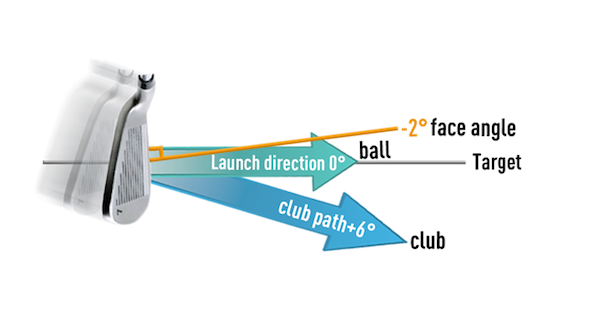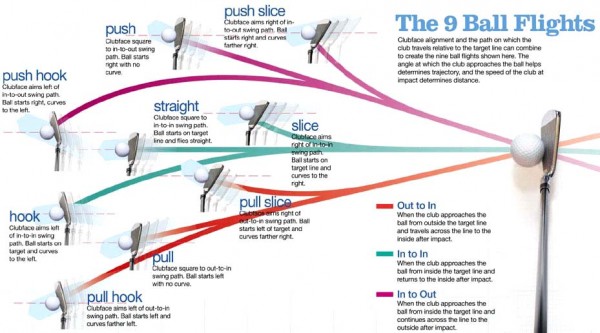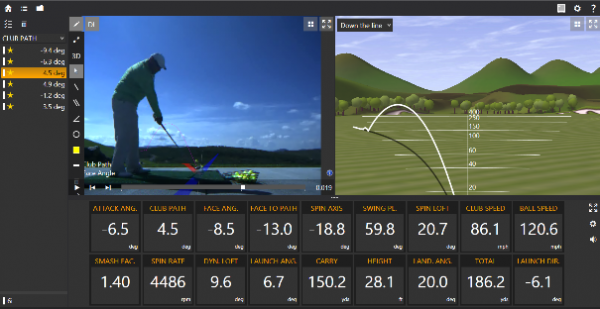The 9 Ball Flights
There are 9 offical ball flights
See below the break down of thejm and how they are achieved
- What causes a slice etc...

If you are a golfer over the age of 25, you were probably taught the old ball flight laws. You know, the one stating that club path determined the starting direction of the golf ball and that face controlled the curvature. If so, you were probably shown a ball flight law poster similar to the one shown below. Ignore it.
We now know, thanks to studies done on Doppler radar launch monitors like FlightScope and Trackman, that the old ball flight laws are invalid. The golf ball actually starts in the direction of the face angle at impact and it curves away from the club path provided a golfer has centered impact. With drivers, face angle controls about 85 percent of a ball’s starting direction.With irons, face angle accounts for about 75 percent of a golf balls starting direction. As loft is added, the ratio is reduced.

Note: For the sake of this article, we are going to assume that all your shots are a centered strike. When shots are hit off-center, something called “Gear Effect” applies, which changes the launch and spin of a shot.
The Ball Flight Laws
- Curvature is created when the path of the club and the face angle of the club point in different directions at impact.
- When the path and the face are pointing in the same direction at impact, you can hit a pull, a straight shot, or a push depending on where the face and the path are pointing. The ball will not curve unless another force is acting upon it, such as wind, slopes, off-center hits, etc.
- The ball mostly starts in the direction of the face angle at IMPACT (green arrow).
- The clubface direction at ADDRESS does NOT control the face angle direction at impact, however, it can influence it.
- The ball curves away from your swing path (blue arrow).
- Divots do not tell you starting direction, true club path, angle of attack, curvature or exact lie angle. They are virtually worthless for you to use to determine what happened during impact.
How Trackman Launch Monitors Show's Golf Ball Curvature
- Club Path shows us if you are swinging in-to-out, down-the-line, or out-to-in. Negative numbers are out-to-in, while positive numbers show in-to-out.
- Face Angle tells you what direction the clubface was pointing at IMPACT. Negative numbers show that the face was pointing left of the target line, and vice versa for positive numbers.
- Face-to-Path Ratio is the difference between these two entities. With longer clubs, the bigger the face to path number, the more curvature you will see with a centered impact. Negative numbers show that the face was left of the path and positive numbers show the face right of the path.
- Launch Direction shows where the ball started relative to the target. Negative numbers will result if the ball begins to the left of your target, and positive numbers will result if the ball begins to the right of the target.
- Spin Axis shows us the curvature of the ball or tilting of its axis. Negative numbers result if the ball moves to the left and positive numbers result if the ball moves to the right.
You can see all these numbers at once in the ball flight screen below. Click the photo to enlarge the image.
Now, I’ll explain the numbers that create a “Pull Hook.”
- The club path is 4.5 degrees right of the TARGET.
- The club face is -8.5 degrees left of the TARGET.
- The face-to-path is -13 degrees.
- The launch direction is -6.1 degrees left of the TARGET.
- The spin axis is -18.8, showing the movement of the ball to the left.
This ball started a touch left of the target line and curved further away from the path, missing the target way left. Obviously it’s easy to see these actions when you have a FlightScope Trackman handy, but how do you best audit your ball’s flight when you are alone on the range?
Note: Remember, we are assuming a centered strike, because a toe hit can create a similar spin axis.
- Build a practice station with sticks on the ground along your feet and your target line so you “know” you are lined up the way you feel best works for your game.
- Place a target ball in front of and in-line with your golf ball and the target as shown in this photo.
- Hit the ball and ask yourself a few questions:
Where did the ball begin relative to my target ball that I put down? What did the ball do at the apex of its flight?
- If your ball begins left of the target ball, your club face was pointed left of the target at impact.
- If your ball begins right of the target ball, your club face was pointed to the right of the target at impact
After you determine your starting direction, look at the curvature of the ball and ask yourself the following questions.
- Did the ball curve right of where the ball started? If so, your path was left of your ball’s starting direction.
- Did the ball curve left of where the ball started? If so, your path was right of the ball’s starting direction.
When you know the answer to these questions, you have determined where your ball started and how it curved. Thus, you have backed into the impact alignments between your path and face at impact. We know this is not an exact science and Gear Effect can alter these curvatures, but this is a great way to at least get started understanding the new ball flight laws.
Have some fun at the range today!
9 Shot Drill
The 9 Shot Drill is used to calibrate your face to path, path, and low point control in a functional way. To complete the drill, you must hit all 9 ball flights - 3 different curves with 3 different heights.
- Low Draw
- Low Straight
- Low Fade
- Medium Draw
- Medium Straight
- Medium Fade
- High Draw
- High Straight
- High Fade



